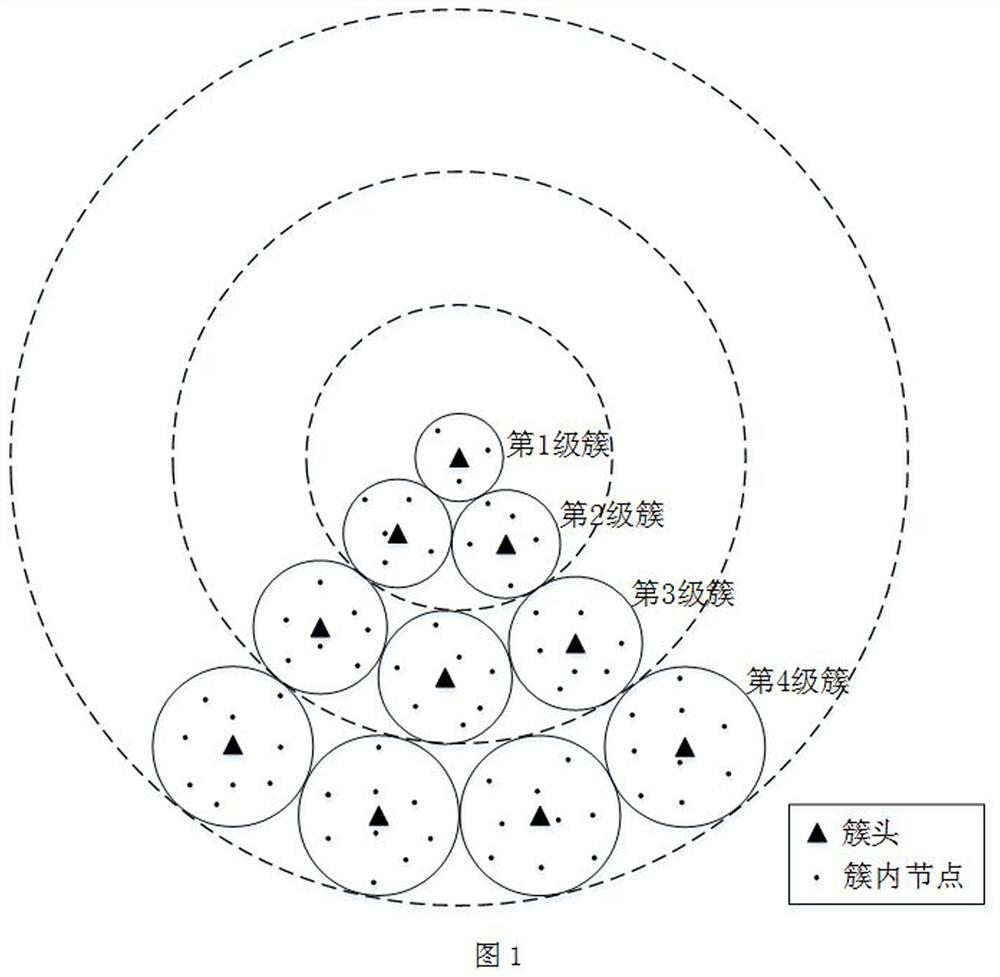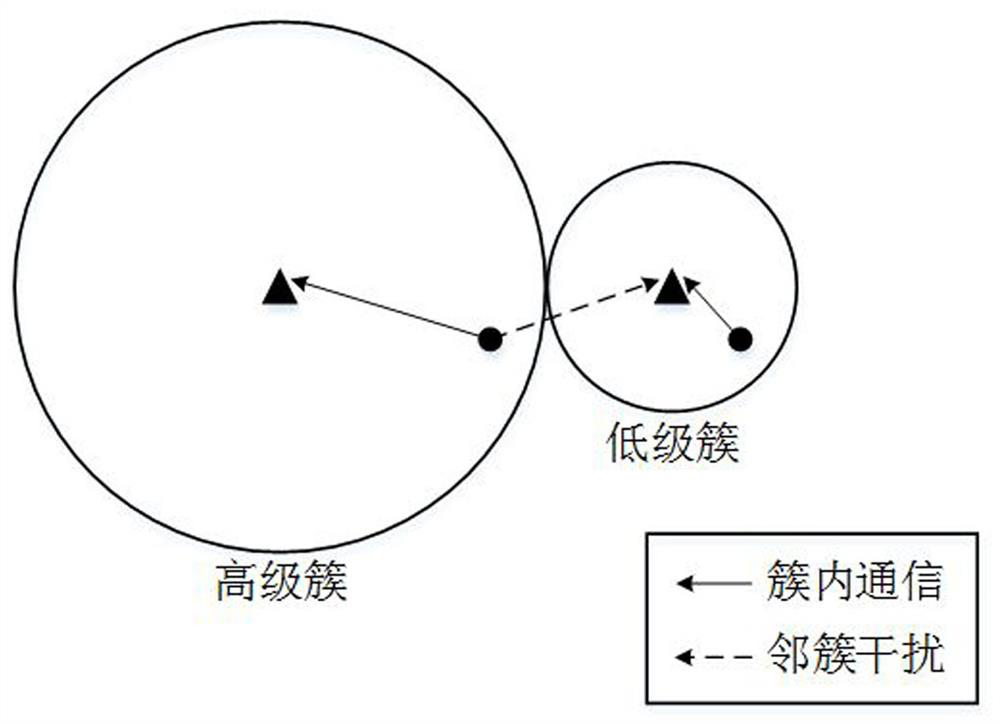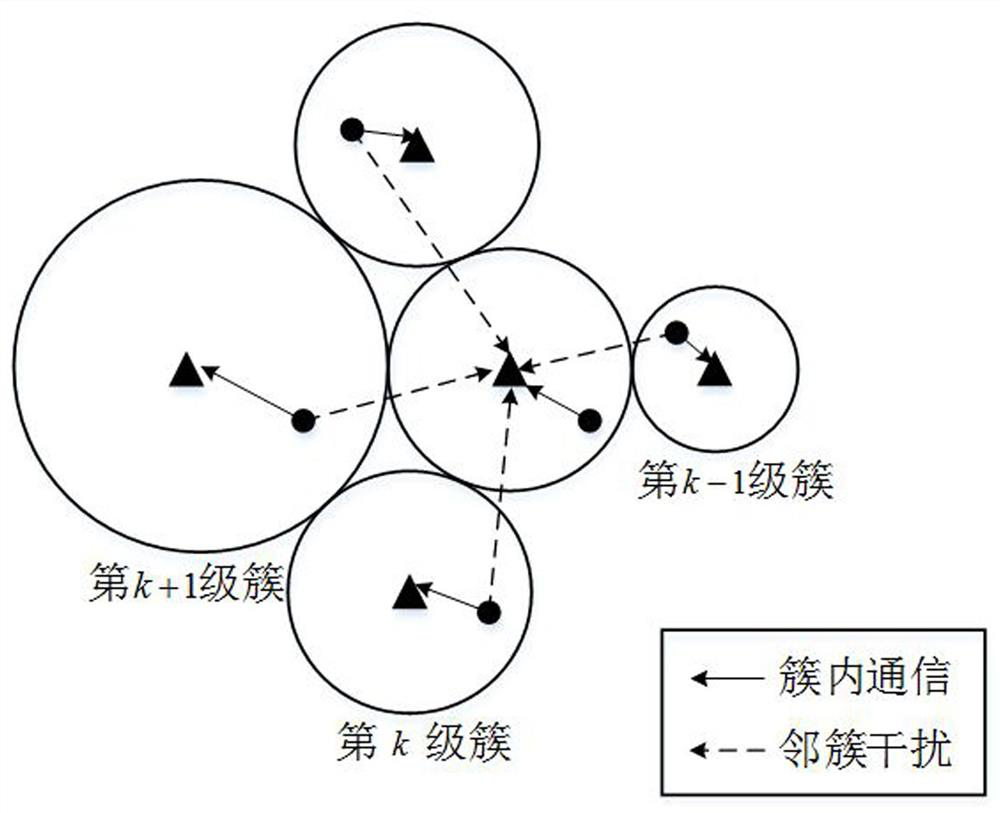A Uplink Power Control Method Based on Neighbor Cluster Interference
A power control and link technology, applied in power management, wireless communication, electrical components, etc., can solve the problems of high interference power, increase the probability of interruption of hot areas, and reduce the average communication quality of the entire network.
- Summary
- Abstract
- Description
- Claims
- Application Information
AI Technical Summary
Problems solved by technology
Method used
Image
Examples
Embodiment
[0027] refer to Figure 4 , an uplink power control method based on adjacent cluster interference, comprising the steps of:
[0028] 1) Network system initialization: determine the number of levels of each cluster head in the network, determine the coverage radius of each level of cluster head, and gather the information of the nodes in the outermost cluster to the Sink that needs to go through each level of cluster heads on the path. Processing and forwarding, the length of time for each cluster head to process information is τ, the maximum delay of network data transmission is limited to T, then the number of cluster head levels experienced by node data transmission in the network is The network initialization will divide the entire network coverage plane into K-level rings, the cluster heads in the same level of rings have the same coverage radius, and mark the cluster heads in the k-th level ring as the k-th level cluster head, and the network initialization According to...
PUM
 Login to View More
Login to View More Abstract
Description
Claims
Application Information
 Login to View More
Login to View More - R&D
- Intellectual Property
- Life Sciences
- Materials
- Tech Scout
- Unparalleled Data Quality
- Higher Quality Content
- 60% Fewer Hallucinations
Browse by: Latest US Patents, China's latest patents, Technical Efficacy Thesaurus, Application Domain, Technology Topic, Popular Technical Reports.
© 2025 PatSnap. All rights reserved.Legal|Privacy policy|Modern Slavery Act Transparency Statement|Sitemap|About US| Contact US: help@patsnap.com



